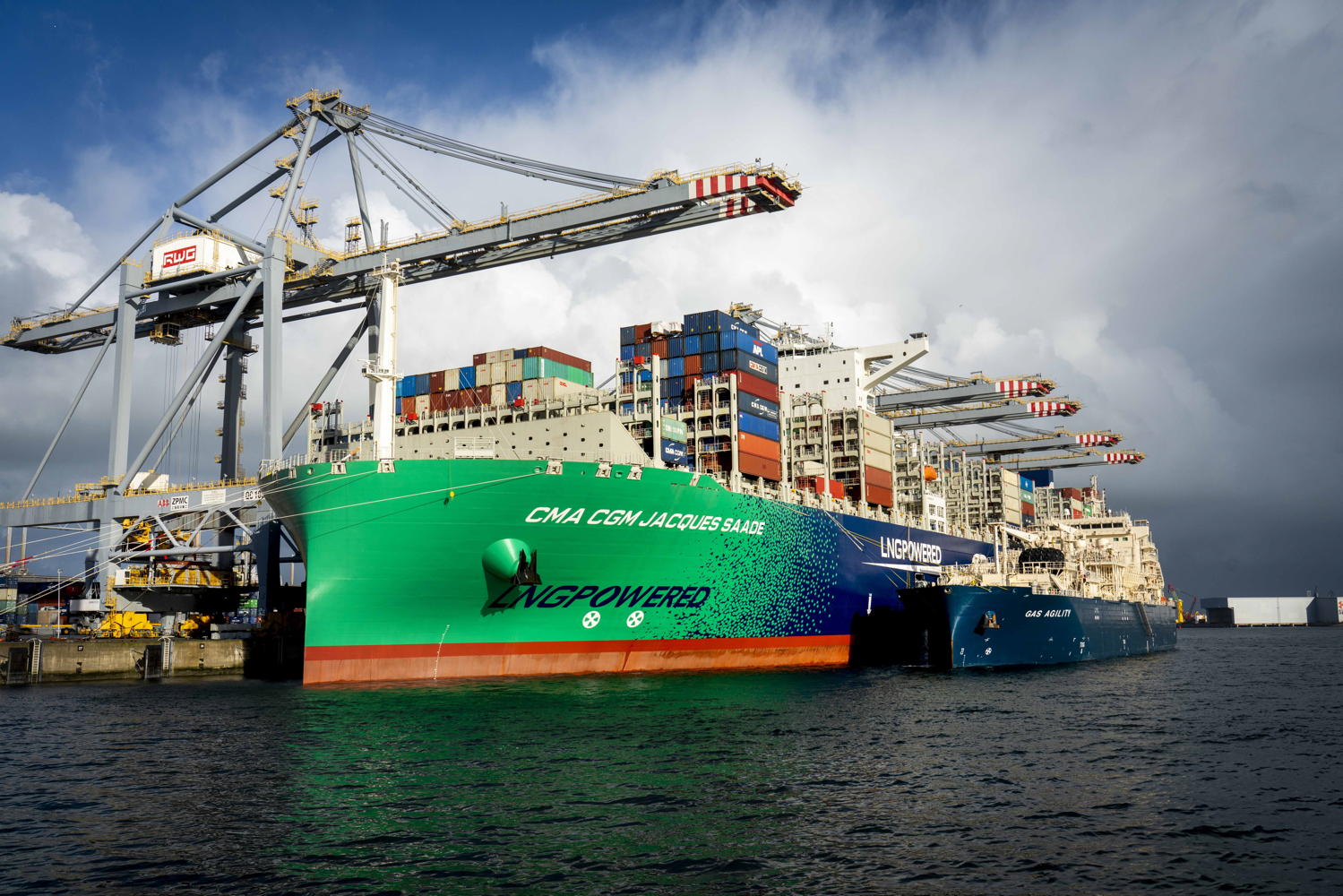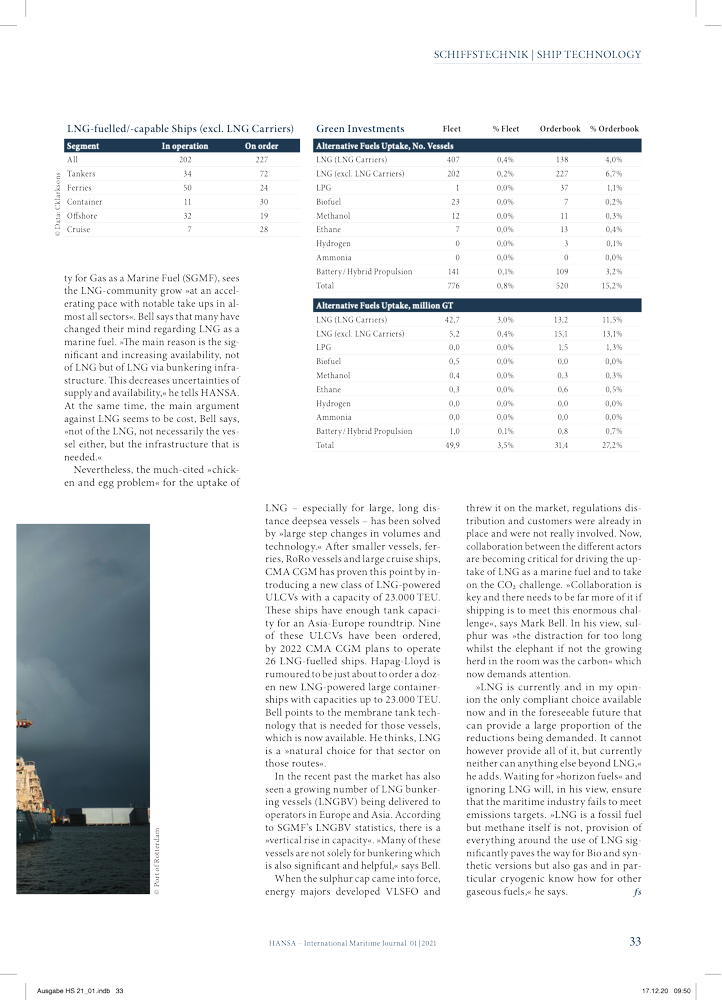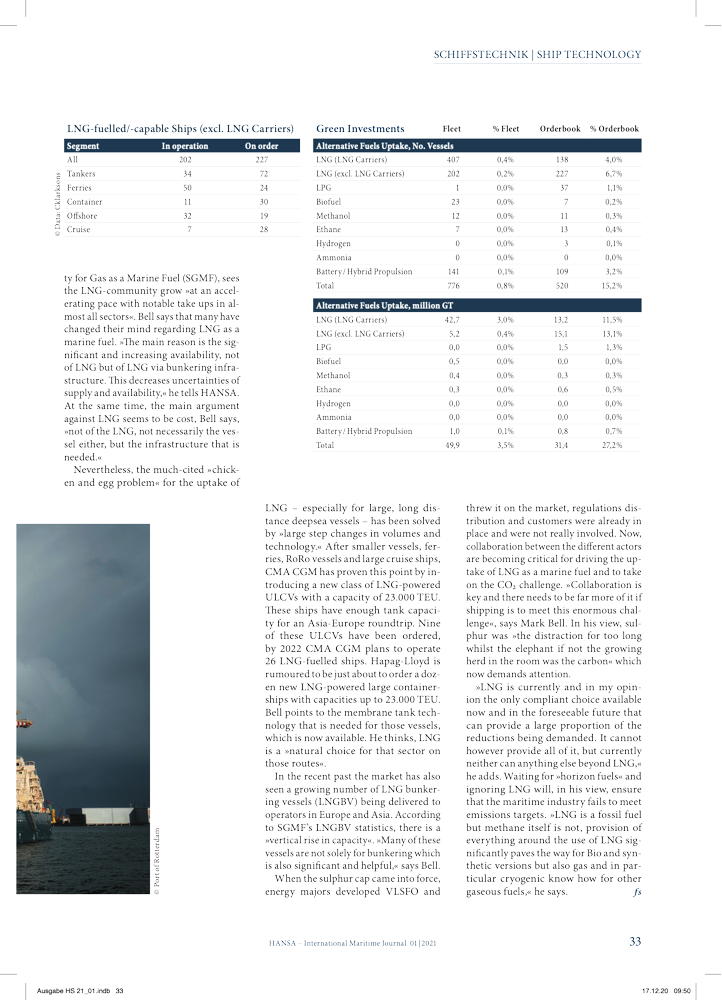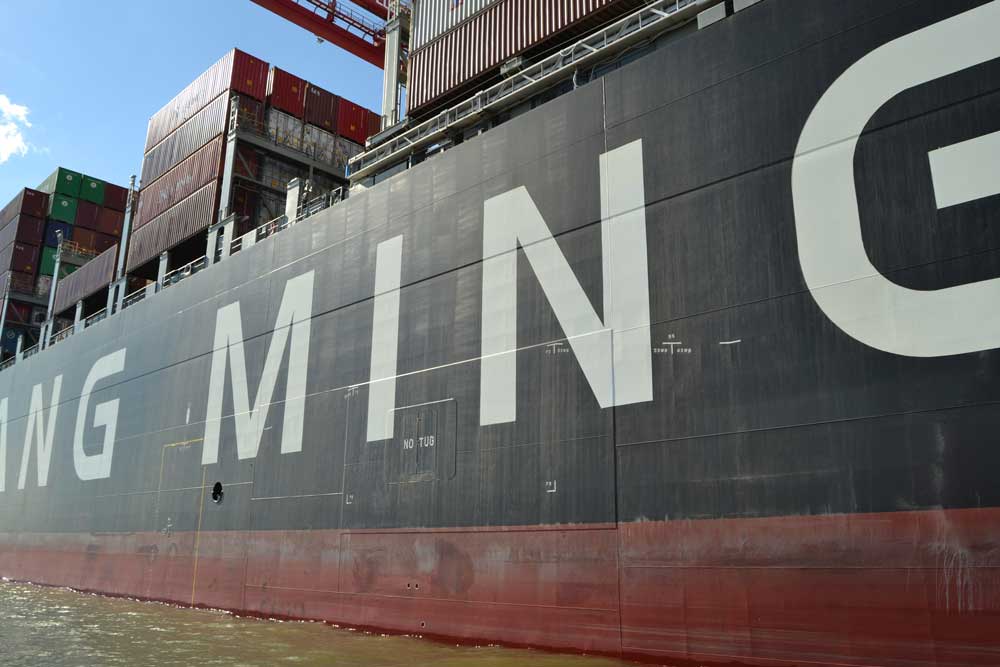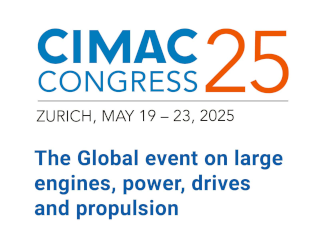Looking at the global orderbook, LNG gains attraction as an option for getting closer to the IMO’s climate targets, as a big chunk of contracted ships will use gas as a fuel. The availability of bunkering infrastructure has changed many minds
As calculated recently by Clarksons Research, 15.2% of all newbuildings – and 27.2% by gross tonnage – currently in the global orderbook[ds_preview] will use »alternative fuels«. Those fuels – LNG, LPG, biofuel, methanol, ethane, Hydrogen, ammonia, battery/hybrid propulsion – are currently in use on 3.5% of the operating fleet, the data shows. LNG is the most popular among these fuels representing 10.7% of the order book and 24.6% in terms of gross tonnage.
Clarksons Research’s Stephen Gordon says that »LNG’s case as a legitimate stepping stone to meet emissions targets is supported by port facility investment.« Outside of LNG carriers, Clarksons is »now tracking 227 (15.1mill. GT) confirmed LNG fuel capable newbuilding orders, above the 202 in the trading fleet. LNG fuel uptake by segment is lead by Tankers (34 in the fleet plus 72 newbuild orders), Fer- ry (50 plus 24), Containerships (11 plus 30), Offshore (32 plus 19) and Cruise (7 plus 28). LPG as a fuel is gaining good traction within the LPG carrier fleet (1 in fleet, 37 newbuild orders plus 11 pending retrofits).«
Gordon also counts 124 ports with LNG bunkering facilities and forecasts 170 ports to provide gas bunkering infrastructure by the year 2022. Over the same period, the LNG bunkering vessel fleet is projected to double.
In fact, IMO regulations and climate targets as well as the EU’s push to include shipping into the Emissions Trading Scheme have changed dynamics lately in favour of LNG. But the regulatory side is just one factor. Mark Bell, general manager of the industry organization Society for Gas as a Marine Fuel (SGMF), sees the LNG-community grow »at an accelerating pace with notable take ups in almost all sectors«. Bell says that many have changed their mind regarding LNG as a marine fuel. »The main reason is the significant and increasing availability, not of LNG but of LNG via bunkering infrastructure. This decreases uncertainties of supply and availability,« he tells HANSA. At the same time, the main argument against LNG seems to be cost, Bell says, »not of the LNG, not necessarily the vessel either, but the infrastructure that is needed.«
Nevertheless, the much-cited »chicken and egg problem« for the uptake of LNG – especially for large, long distance deepsea vessels – has been solved by »large step changes in volumes and technology.« After smaller vessels, ferries, RoRo vessels and large cruise ships, CMA CGM has proven this point by introducing a new class of LNG-powered ULCVs with a capacity of 23.000TEU. These ships have enough tank capacity for an Asia-Europe roundtrip. Nine of these ULCVs have been ordered, by 2022 CMA CGM plans to operate 26 LNG-fuelled ships. Hapag-Lloyd is rumoured to be just about to order a dozen new LNG-powered large containerships with capacities up to 23.000TEU. Bell points to the membrane tank technology that is needed for those vessels, which is now available. He thinks, LNG is a »natural choice for that sector on those routes«.
In the recent past the market has also seen a growing number of LNG bunkering vessels (LNGBV) being delivered to operators in Europe and Asia. According to SGMF’s LNGBV statistics, there is a »vertical rise in capacity«. »Many of these vessels are not solely for bunkering which is also significant and helpful,« says Bell.
When the sulphur cap came into force, energy majors developed VLSFO and threw it on the market, regulations distribution and customers were already in place and were not really involved. Now, collaboration between the different actors are becoming critical for driving the uptake of LNG as a marine fuel and to take on the CO2 challenge. »Collaboration is key and there needs to be far more of it if shipping is to meet this enormous challenge«, says Mark Bell. In his view, sulphur was »the distraction for too long whilst the elephant if not the growing herd in the room was the carbon« which now demands attention.
»LNG is currently and in my opinion the only compliant choice available now and in the foreseeable future that can provide a large proportion of the reductions being demanded. It cannot however provide all of it, but currently neither can anything else beyond LNG,« he adds. Waiting for »horizon fuels« and ignoring LNG will, in his view, ensure that the maritime industry fails to meet emissions targets. »LNG is a fossil fuel but methane itself is not, provision of everything around the use of LNG significantly paves the way for Bio and synthetic versions but also gas and in particular cryogenic know how for other gaseous fuels,« he says.






